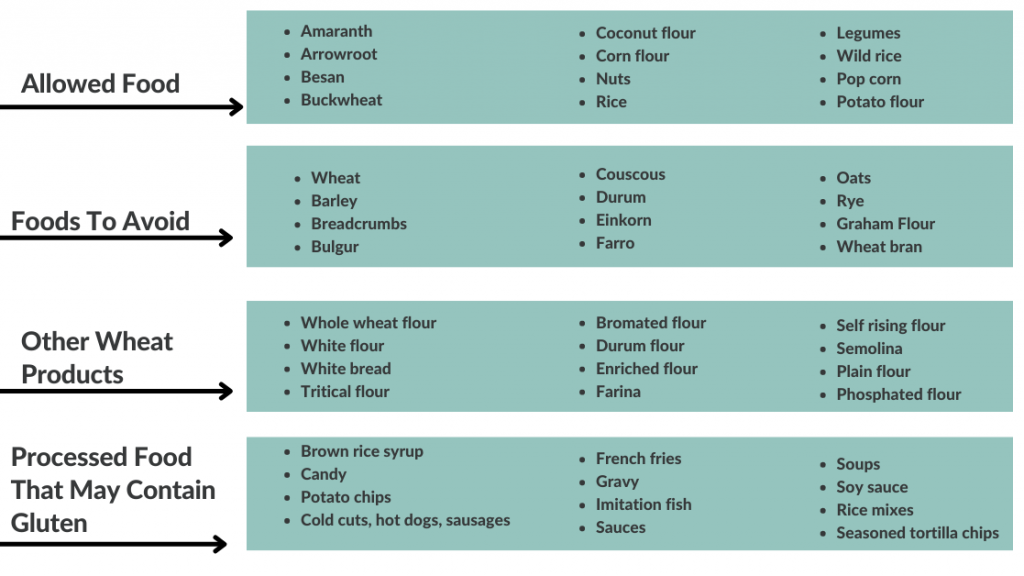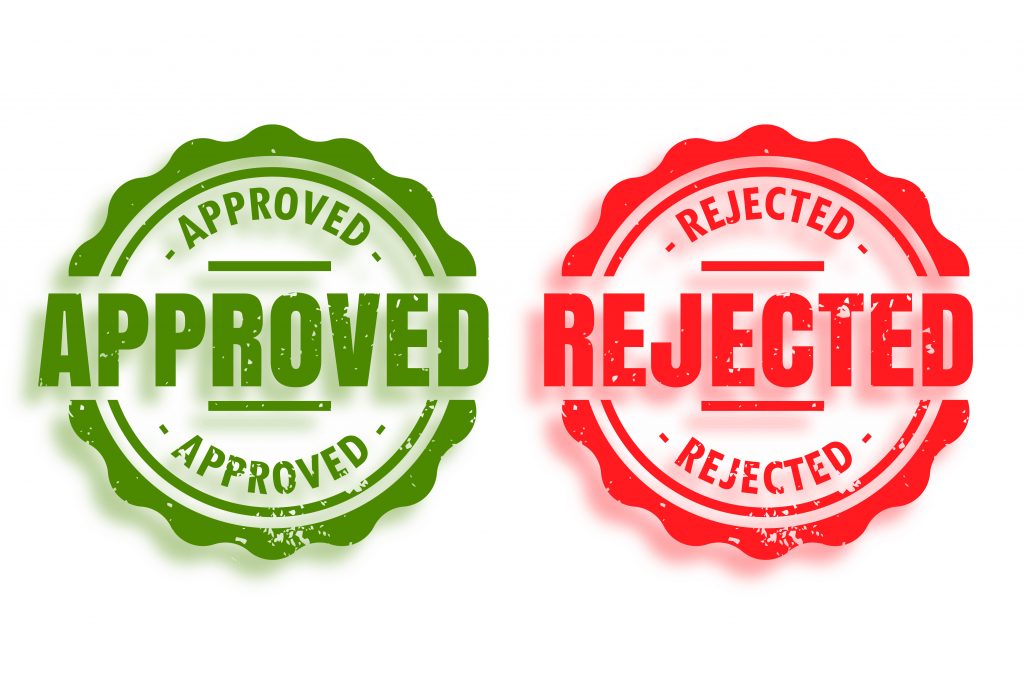Read Gluten-Free Labels Before Buying Food Products

Have you ever been to a store for buying groceries or food items and checked the food labels? Reading food labels is very important to check before buying food products especially if you are celiac, gluten intolerant, or sensitive to gluten. Most of the time people only give importance to the expiry dates and overlook gluten-free labels.
Importance of Labelling of Gluten-Free Food
It is no surprise that the production, sale, and consumption of pre-packaged foods have increased exponentially over the years.
The role of food labeling in food safety is indispensable. In addition to helping consumers make informed choices about the products they buy, these labels also guide them in safely using the food products.
Largely considered to be a direct source of product information between the buyer and the seller, food labels help consumers make mindful, informed, and healthy food choices.
While proper food labels benefit everyone, people with food allergies rely especially heavily on the clear and accurate labeling of their food products.
Many studies have been conducted to assess the current status of health in India, and the root causes of these issues as they pertain to diet and lifestyle choices.
What is Gluten?
The first question that comes to mind after being diagnosed with celiac is what gluten-free means and how it affects celiac people.
gluten is the main storage protein that is naturally located in specific grains like barley, wheat, and rye.
In the food industry gluten provide elasticity and stretches which allow the bread to rise and soak moisture.
Due to its frequent properties and gluten is widely used in the food process industry to provide instant texture and enhance moisture retention.
Gluten has been known by different names and terms. Some gluten-free items are listed under various names or scientific terms.
Following are the scientific terms that are used for wheat, barley, and rye. If you see any ingredient on the packaging you can have the idea that a particular product contains gluten.
- Secale cereale: Rye
- Triticum spelta: Type of wheat
- Triticale: Cross between wheat and rye
- Triticum Vulgare: Wheat
- Hordeum vulgare: Barley
How can you tell if something is gluten-free?
Alternative Names for Gluten
→Gluten-Free Label: If you see the gluten-free sign on the product then it is more likely safe to eat and gluten-free.
However, you should always check the ingredients list on the package to make sure that the product is gluten-free and safe to eat. It is also important to keep in mind that some products are written as “wheat-free” which does not necessarily mean that are “gluten-free”.
→Check the Allergen Listing: Check the Ingredients on the package: Some products’ ingredient lists contain allergens including soy, wheat, egg, nuts, and milk which necessarily does not mean that it is gluten-free.
→ Check Gluten Obvious Ingredients on the Package: Following are the gluten ingredients you need to check before purchasing packages of food:
- Barley
- Wheat
- Malt
- Rye
- Yeast
- Oats (unless labeled as gluten-free)
If you see the gluten-free sign on the product always check the ingredient on the package and read the ingredient list thoroughly if there is any hidden ingredient available there is a possibility that it has contained gluten.
Ingredients That Always Contain Gluten
Following are the foods which mostly contain gluten and you should avoid:
- Bread and Pastries
- Noodles
- Flour Tortillas
- Sauces and Gravies
- Brewer yeast
- Beer
- Malt vinegar
- Wheat flour
- Baked goods
- Cereals and granola
- pancakes, waffles, french toast, crepes, and biscuits.
- Crackers
Ingredients That May Contain Gluten
- Cheesecake fillings
- Brown rice syrup
- Soy sauce
- Self-basting poultry
- Energy bar or Granola bar
- Potato Chips
- Soup
- Candy and candy bars
- Processed lunch meats
- Salad dressings and marinades
- Egg served at restaurants
- Pre-seasoned meats
- Multigrain chips or tortillas
- French fries
- Ales
- Communion Waters
- Croutons
- Roux
- Supplements
- Play Dough
- Seafood

Tips for Gluten-Free Label Reading
If you are someone who has been diagnosed with a food allergy, reading labels might seem incredibly daunting. Spending some time learning about your specific sensitivity and the many ways in which they may be listed on food products goes a long way.
When reading food labels in India, pay attention to the following:
→Check the third-party certification
If a product has third-party certification like Gluten-Free Certification Organisation (GFCO) it is more likely to be safe for celiac patients and gluten-free.
→Check the gluten-free label on products
Whenever you go to a store or buy a packaged food product always check the gluten-free label on that product. If a product has a gluten-free label it is more likely safe to eat. However, make sure that you check the ingredients on the packaging as well.
→Serving Size
Always make to check the serving size to know how much you are consuming relative to the suggested quantity, as we often tend to consume more than one serving size.
→Nutritive Value
The nutritive value of a product includes metrics, such as calories, proteins, carbohydrates, fats, and vitamins, as well as the presence of saturated and unsaturated fatty acids, cholesterol, calcium, sodium, etc. Consume a product only if it suits your dietary requirements.
→Important Details
If you have a history of being allergic to a particular ingredient, look for its presence on the ingredients list so that you do not develop an allergic reaction upon consumption. Other important details such as the expiry date should not be ignored either.
→Colors and Preservatives
Don’t forget to check the label for any kind of preservatives, such as artificial food coloring, since they could trigger an allergic reaction in highly sensitive individuals.
Some other facts you should know:
- Calories are mentioned in terms of energy.
- Check the micronutrients section for the presence of vitamins and minerals in the food product.
- Nutrients such as carbs, proteins, and fats are listed in descending order on the food label.
- Ingredients are also listed in descending order. This is where you are likely to find all the information regarding an allergen or additives as well.
FDA’s Regulation of “Gluten-Free” Claims
A Disease Burden Study report, “India: Health of the Nation’s States” conducted by the Indian Council of Medical Research revealed some shocking statistics.
The report stated that “death due to non-communicable disease (NCD) has proportionally increased from 37.09% in 1990 to 61.8% in 2016”.
According to another National Family, Health Survey conducted in the year 2015-2016, “11% of women (1 in 10) and 15% of men (1 in 7) age 15-49 are hypertensive, and about 60.4% of people screened have never had their blood pressure measured”.
One of the most noteworthy measures introduced to mitigate these bleak trends is the Eat Right Movement, initiated on July 10th, 2018, focusing on spreading awareness among businesses and consumers and creating a “new food culture” that promoted the inclusion of healthy foods in our daily meals.
This data indicates that one of India’s most significant risk factors for poor health in 2016 was the result of dietary choices, specifically, the consumption of a diet low in fruits, vegetables, and whole grains, and one high in salt, sugar, and fat.
Evidently, well-illustrated food labels grew in importance and began to help consumers choose healthier alternatives.
Food labeling is of crucial importance in India, yet several small manufacturers leverage the lack of strict FSSAI regulations to mislead their consumers.

Hence, we must understand the extent to which accidental consumption of even a small number of allergens by an individual with a food allergy can pose life-threatening risks to their health.
Current FSSAI regulations require all product manufacturers and brands to follow a not-so-comprehensive set of guidelines that impose the following twelve primary labeling regulations for food packaging:
- Name of the food
- The list of ingredients
- Nutritional information
- Declaration if the food product is vegetarian or not
- Declaration of the food additives used
- Name and complete address of the manufacturer
- Customer care details
- Quantity
- Retail sale price
- FSSAI logo and license number
- Batch identification number, the date of marketing, country of origin
- Instructions for use
Most consumers with food allergies suffer due to the lack of information about potential allergens in food items.
Finally responding to the advocacy of informed consumers, several brands in India are working on making their product labels inclusive of nutrients, allergen warnings, and more.
Products Covered by the Gluten-Free Regulation
Thanks to people who have voiced their concerns regarding current manufacturer practices, the Food Safety and Standards Authority of India (FSSAI) has finally decided to come up with labeling of allergens as well as gluten-free products.
An amendment of the FSSAI Regulations, released in 2016, incorrectly defined gluten-free food as food that “consists of oAn amendment of the FSSAI Regulations, released in 2016, incorrectly defined gluten-free food as food that “consists of or is made of one or more ingredients containing millets, pulses, ragi, rice, or legumes”.
Further, for any food item to be qualified and labeled as gluten-free, the gluten levels in the product needed to be less than 20 mg per kg.
Individuals with celiac disease must avoid gluten entirely, for even the slightest ingestion of gluten can elicit allergic symptoms. Thus, better labeling practices are of pressing urgency to prevent even more suffering in the Indian gluten-free community.
FDA rules and regulations are applied to all Food and beverages including Processed food, packaged food, dietary supplements, fruits, and vegetables.
→ There are some the exceptions like poultry, meat, and certain foods.
→ Alcohol beverages are regulated by Alcohol and Tobacco Tax and Trade Bureau (TTB)
Conclusion
Individuals with celiac disease must avoid gluten entirely, for even the slightest ingestion of gluten can elicit allergic symptoms. Thus, better labeling practices are of pressing urgency to prevent even more suffering in the Indian gluten-free community.
It is always recommended for celiac or gluten intolerant patients to check the label on food packaging to make sure that food is gluten-free and safe to eat.
 MY JOURNEY
MY JOURNEY About Me
About Me Early life
Early life Diagnosis
Diagnosis CELIAC DISEASE
CELIAC DISEASE Symptoms & Diagnosis
Symptoms & Diagnosis Treatment & Follow Up
Treatment & Follow Up GLUTEN - FREE LIVING
GLUTEN - FREE LIVING At Home
At Home At School
At School At Social Events
At Social Events
 Grocery Shopping
Grocery Shopping COMMUNITY OUTREACH
COMMUNITY OUTREACH Gluten Free Meetup
Gluten Free Meetup Workshops
Workshops Webinars
Webinars COVID-19 Camps By Gluten Free Jio
COVID-19 Camps By Gluten Free Jio  Mid Day Meal
Mid Day Meal Beyond Celiac
Beyond Celiac Real Stories of Celiac
Real Stories of Celiac RESOURCES
RESOURCES Restaurant Dining Cards
Restaurant Dining Cards Recipes
Recipes Gluten Free eBook
Gluten Free eBook Gluten Free Jio App
Gluten Free Jio App RECOGNITION
RECOGNITION TRAVEL DIARY
TRAVEL DIARY



